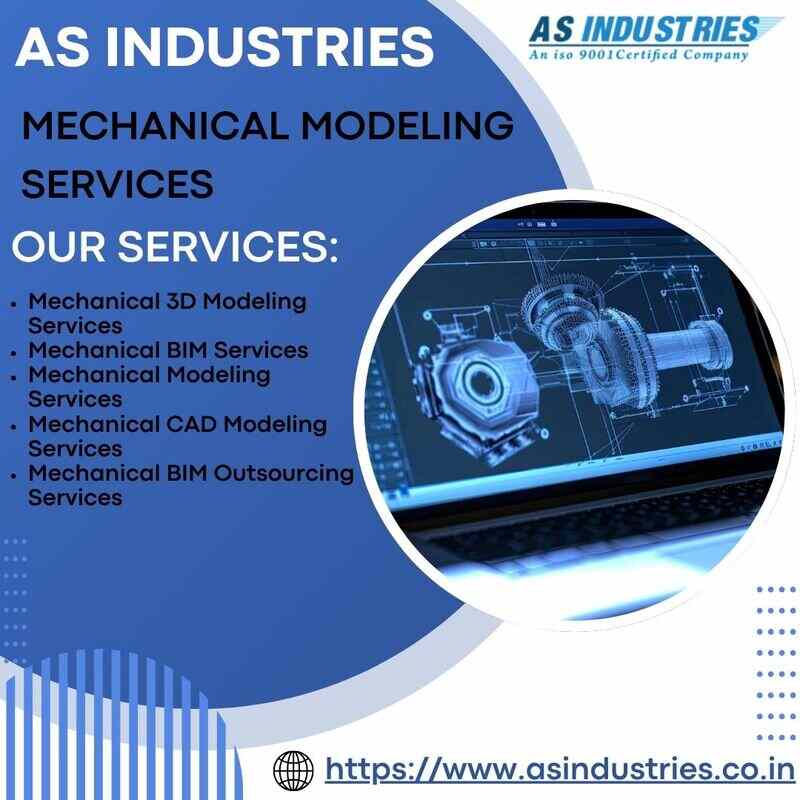Mechanical system is a complex terrain, traditionally navigated through iterative physical prototyping. However, this method is often time-consuming, expensive, and limited in its ability to explore diverse design variations. Today, precision mechanical modeling acts as a critical bridge, enabling engineers to meticulously translate abstract ideas into optimized, tangible realities. This blog delves into the intricate mechanisms of advanced modeling techniques, highlighting how they are revolutionizing the engineering landscape, fostering rapid innovation, and driving the development of increasingly sophisticated products.
The Power of Virtual Prototyping: A Deeper Dive:
Virtual prototyping transcends simple visualization, offering a dynamic and interactive environment for design exploration. Imagine simulating the intricate interplay of gears within a complex transmission system, visualizing stress concentrations under extreme load conditions, or analyzing the aerodynamic performance of a newly designed aircraft wing – all within a digital realm. This level of granular detail allows engineers to:
- Conduct “What-If” Scenarios: Explore numerous design variations and operating conditions without the constraints of physical prototypes, leading to more robust and optimized solutions.
- Optimize Material Selection: Simulate the behavior of different materials under various loads and environmental conditions, enabling informed decisions about material selection for optimal performance and durability.
- Validate Manufacturing Processes: Model manufacturing processes like injection molding or casting to identify potential defects and optimize tooling design, minimizing production errors and waste.
- Perform Tolerance Analysis: Simulate the effects of manufacturing tolerances on assembly and performance, ensuring that designs meet stringent quality requirements.
- Simulate Failure Analysis: Subject virtual prototypes to extreme conditions to identify potential failure modes and develop preventive measures, enhancing product safety and reliability.
Beyond Visualization: The Analytical Depth – Expanding the Toolkit:
- Finite Element Analysis (FEA): Beyond stress and strain, FEA can simulate thermal analysis, vibration analysis, and fatigue analysis, providing a comprehensive understanding of structural integrity and performance. Advanced FEA software can handle complex geometries and material behaviors, enabling accurate simulations of even the most challenging designs.
- Computational Fluid Dynamics (CFD): CFD extends beyond simple fluid flow analysis to include heat transfer, turbulence modeling, and multiphase flow simulations. This enables engineers to optimize the design of systems involving fluid flow, such as heat exchangers, pumps, and aerodynamic components.
- Optimization Software: Integrated optimization tools allow engineers to automatically optimize design parameters based on specific performance criteria, leading to more efficient and effective designs.
The Human Element: Creativity, Collaboration, and Data-Driven Design:
The synergy between human expertise and advanced modeling tools is crucial for successful product development.
- Enhanced Collaboration: Digital models facilitate seamless collaboration between designers, engineers, and manufacturers, regardless of their geographical location. Cloud-based platforms enable real-time sharing and review of design data, streamlining the design process.
- Knowledge Capture and Reuse: Digital models serve as a valuable repository of design knowledge, enabling engineers to capture and reuse best practices from previous projects.
- Integration with Design for Manufacturing (DFM): Modeling tools can be integrated with DFM principles, ensuring that designs are optimized for manufacturability, reducing production costs and lead times.
- Augmented Reality (AR) and Virtual Reality (VR): AR and VR technologies provide immersive experiences for design review and visualization, enabling engineers to interact with virtual prototypes in a more intuitive and engaging way.
Looking Ahead: The Future of Mechanical Modeling – AI, Digital Twins, and Beyond:
The future of mechanical modeling is intertwined with the advancements in artificial intelligence, digital twin technology, and additive manufacturing.
- AI-Driven Design Optimization: AI algorithms can analyze vast amounts of simulation data to identify optimal design parameters and predict product performance, accelerating the design process and enhancing innovation.
- Digital Twins for Predictive Maintenance: Digital twins can be used to monitor the real-time performance of physical assets, predict potential failures, and optimize maintenance schedules, reducing downtime and extending asset lifespan.
- Integration with Additive Manufacturing: Mechanical modeling plays a crucial role in designing and optimizing parts for additive manufacturing, enabling the creation of complex geometries and customized designs.
- Material Informatics: Integrating material science with mechanical modeling allows for the prediction of material properties and performance under various conditions, leading to the development of new and advanced materials.
Conclusion:
Precision mechanical modeling is not merely a tool; it is a transformative paradigm that empowers engineers to push the boundaries of innovation and create increasingly complex and sophisticated mechanical systems. By embracing the power of virtual prototyping, analytical depth, and collaborative design, engineers can bridge the gap between abstract concepts and tangible realities, shaping the future of engineering.

